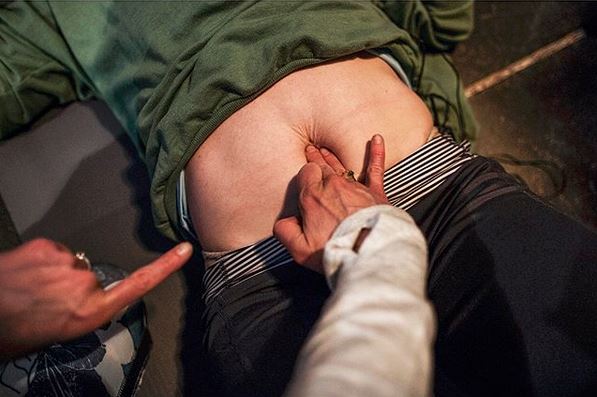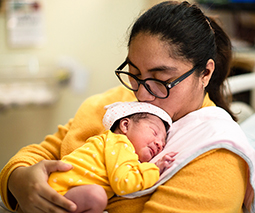The “mummy tummy” exercise that guarantees results

There’s a new exercise doing the rounds that promises to get rid of your ‘mummy tummy’ for good – even if it has been years since you’ve given birth.
Mummy tummy is REAL
You know that little jelly belly that still hangs over your pants after you’ve had kids, no matter how much time has passed or how many crunches you’ve done? Turns out it’s not from eating Tim Tams in your sleep, it could in fact be a result of abdominal separation – also called diastasis recti. According to a study done in Norway last year, around a third of all women develop this condition a year after they’ve given birth.

You can check if you have the condition by lying on your back and placing your fingers below your belly button and feeling for a gap. (Image credit: Instagram)
How diastasis recti happens
Diastasis recti occurs during pregnancy when the growing baby causes the stomach muscles to separate, creating a gap which you can actually measure by finger widths (when lying on your back). For many, this gap doesn’t close after they’ve given birth, which means there’s not a whole lot there to hold in the tummy and organs. Instead, they bulge out and create this permanent little belly – no matter how much exercise you do. And even if you love your post-baby bod, this mummy tummy can actually create a lot of other physical problems for women including chronic lower back pain because of a weakened core.
Stop those sit-ups
Isolated abdominal exercises such as crunches and crossover sit-ups can actually make diastasis recti worse. This is because they splay the stomach muscles apart, when you need to realign them back together. If you’ve been hitting the gym to work off your tummy without success, it could be working against you.
The Dia Method
But there is one exercise you should try. American fitness expert and mother, Leah Keller, has created The Dia Method which guarantees to resolve your diastasis recti in less than 12 weeks simply by doing only one exercise for ten minutes a day. Oh, and it’s also been medically proven to work, even if you had your babies decades ago. No wonder women are going crazy for this simple but effective technique.
The science behind it
According to the Dia Method website, their exercise “activates your transverse abdominis, your natural corset, to protect and restore the abdominal wall. Through isometric contractions of the transverse abdominis, the Dia Method reinforces the strength, resilience and elasticity of both the linea alba and the rectus abdominis”.
How you do it
It appears the Dia Method is as simple as this:
- Sit cross legged on the floor (ideally somewhere quiet)
- Place your hand on your belly
- Take a deep breath in and let your tummy expand fully
- Then exhale as you suck your tummy back in, all the way towards your spine
- Hold this position
- Take small, light breaths
- With each exhale, suck the tummy back in again further and tighter each time
Then change positions every two minutes or so for a total of ten minutes each day – other suggested positions include sitting on your knees, standing with knees slightly bent, lying on your back, on all fours, or laying on your side in the foetal position.
You can do it anywhere
As long as your back is always flat and your belly is pulled all the way back towards the spine (fingers placed on your tummy helping to keep this in check), you can pretty much do this anywhere. And you can even start the method during pregnancy, which reduces the chances of developing diastasis recti in the first place. Woo! You do need to wait at least two weeks after birth before doing the exercises though. Also, be careful if you have any other medical complications post birth, such as a hernia, and speak to your doctor if you have any concerns.
Well, we know what we’ll be doing next time we’re standing in line at the check-out!
Have you tried the Dia Method yet?









